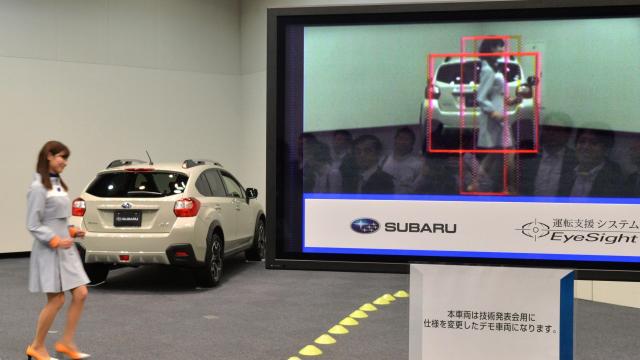In what may be of little surprise to anyone who knows how car technology works, the American Automobile Association (AAA) that driver aid systems probably aren’t going to work in storms or other inclement weather conditions that will obstruct your vision.
AAA put together a study that analysed how these advanced driver-assistance systems (ADAS) function in different weather conditions in a few different cars, and the news isn’t exactly comforting.During ideal conditions, no car crashed into another car. Add in some simulated rainfall, and 17 per cent of 40 km/h test runs and 33 per cent of 56 km/h test runs ended in crashes.
Lane-keeping technology numbers are even less promising. Cars crossed lane markers 37 per cent of the time in dry conditions, but that rate jumped to 69 per cent with simulated rain involved.
Interestingly, these studies only simulated rainfall in the sky, so the pavement itself was dry. AAA noted that this isn’t exactly representative of real-life weather conditions (obviously), so crashes are likely to increase in true wet weather instances.
For full clarity, AAA tested four cars from the 2020 model year: a 2020 Buick Enclave Avenir, a 2020 Hyundai Santa Fe, a 2020 Toyota RAV4, and a 2020 Volkswagen Tiguan.
“The reality is people aren’t always driving around in perfect, sunny weather, so we must expand testing and take into consideration things people actually contend with in their day-to-day driving,” Greg Brannon, AAA’s director of automotive engineering and industry relations, said in a statement that accompanied the data.
ADAS uses different types of sensors in the vehicle to help your car figure out how to do what it needs to do. Those sensors include things like cameras or radar. If you’ve tried to use a camera in heavy rain, you can understand why this might be an issue: once water droplets start covering the lens, it gets harder and harder to register the objects filtering through that lens.
As a result, in rainy or snowy conditions, it can be tough for your car to recognise the car in front of you or the lane markers that might be masked. And while AAA focuses on two technologies, you may also find things like pedestrian detection or smart sign detection also suffer in poor weather.
AAA’s purpose here isn’t to bash ADAS; rather, AAA just wants drivers to be aware of the drawbacks of ADAS, so when the weather gets bad, AAA wants to advise you not to lean too heavily on, say, the automatic emergency braking. Exercise your human brain and use caution while these forms of technology continue to develop.
